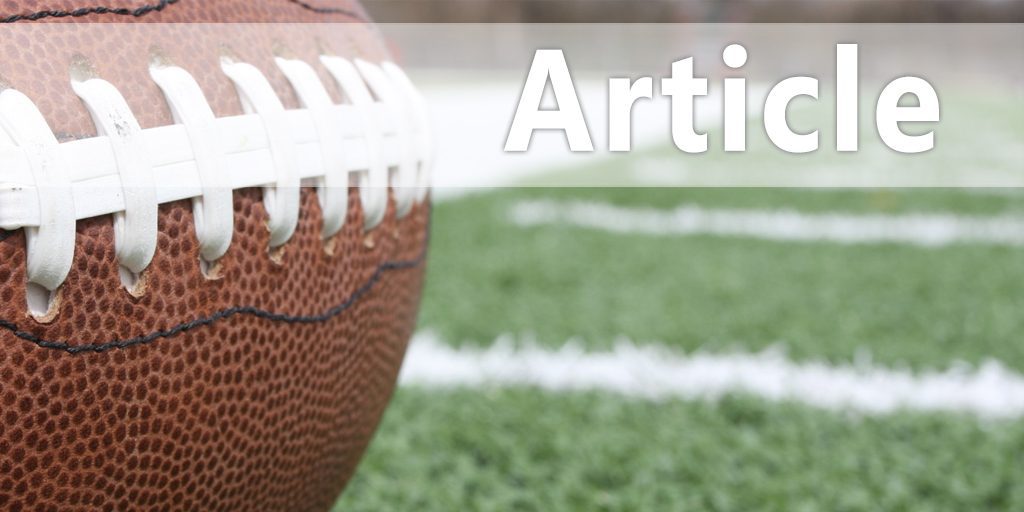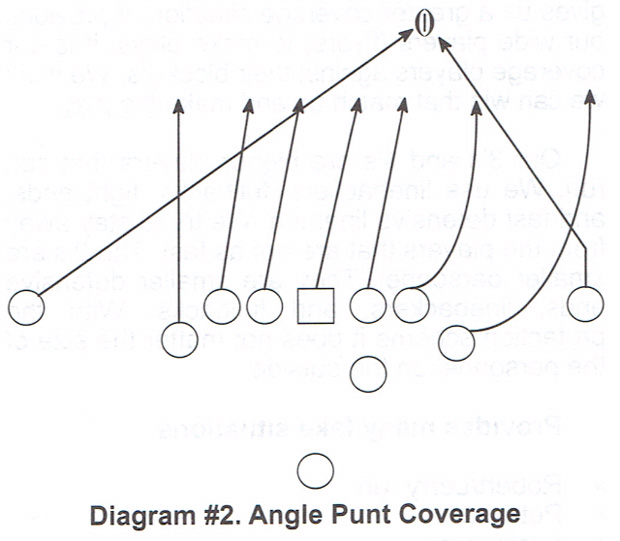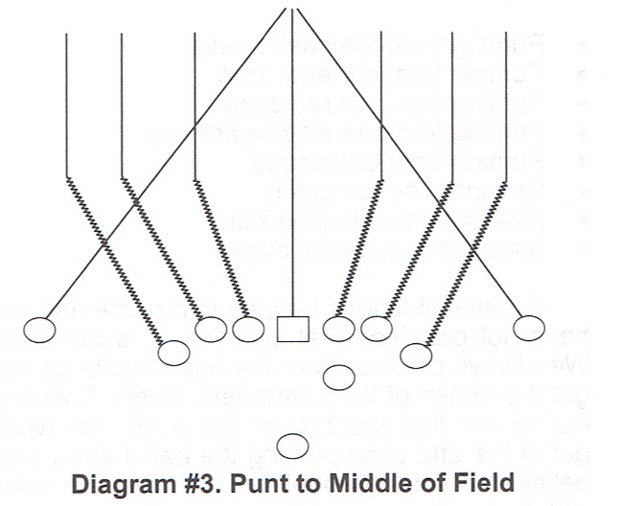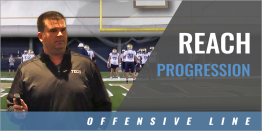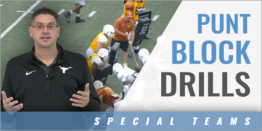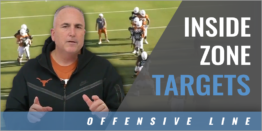| Installing The Spread Punt Game |
| By: Jay Accorsi - Rowan Univ.
Originally Published in: Nike 2016 Coach of the Year Clinics Football Manual - by Earl Browning Provided by: Nike Coach of the Year At Rowan we put a special emphasis on special teams and understand the value of having good special teams play. I have a special team's coordinator who handles all the planning. As the head coach, I do not work on the offensive or defensive side of the ball. I mix myself among all the facets of our teams and especially the special teams. Because of that, our players know how important special teams are to our program. As all coaches in the past, we took special teams for granted and did not commit the time to them that was needed. In this day and age, we understand the difference it can make in winning and losing games. This philosophy has been the same since I came to Rowan as a young coach. Rowan was a great environment for me to come into because special teams were considered valuable with the previous head coach. ROWAN SPECIAL TEAMS PHILOSOPHY • We employ a very sound approach to special teams. We must be willing to utilize all players, both starters and reserves, when it comes to special teams. We need to utilize players from both sides of the ball. Also, we reward certain players for outstanding behavior by allowing them to participate on special teams. • Specifically, we must identify player's strengths and allow them to be employed on special teams. We cannot afford to spend an inordinate amount of time teaching skills certain players have already mastered. We must keep the schemes relatively simple and be willing to use as many players as possible. • The two main goals of special teams are to score points and create advantages in field position. We use special plays when specific opportunities arise within the game plan. • The order of importance is FG/XPT, Punt, Punt Return, FG/XPT block, Kickoff, Kickoff Return, Hands Team, and Onside Kick. We reward special team players by putting them on the traveling squad and down playing the roles of other athletes and praising the role of special team players. We find ways to make our players want to be on special teams and understand the value of them. It is great when you have your stud players that want to play special teams. This year we had a player by the name of Josh Popper who wanted to play on special teams. He is 6'-4" and 260 pounds and a dynamic physical player. He is our star on defense. He played limited time in high school. When he came to us, he wanted to play on special teams and did it all the way through his senior year. When the star defensive end wants to play on the kickoff team, it sets the tone for all the other players on our team. You must play to the strength of the players on special teams. On the punt team, we have wide receivers and players that do nothing but block in practice. On the punt team, we ask them to tackle. We also put linebacker types in the punt formation and ask them to block. You must spend the extra time to cross-train those athletes. We actually do that in spring training. In Division-III football, in spring football we are not allowed pads. However, it is a good time to cross-train our offensive and defensive players. We have segments in our spring practice where we flip the player to the other side of the ball. We have the offensive players go through a tackling circuit with the defensive coaches. Our players understand if they are good on special teams, I will make sure they get on the bus when we travel. You cannot expect the linebacker to block, if he does not know the techniques of blocking. He is used to avoiding blocks and getting to the ball carrier. We have to keep our scheme simple. We are like high school coaches, in that we have the players we have and then we fit the scheme to what they do well. You have to do the best you can with what you have. That means we want to keep the scheme simple and use as many players as we can. I think that is critical. We want our special teams to be as visual as possible but stay within our goals so they understand the value of playing special teams. The goals are simple. We want to score as many points as we can and create an advantage in field position. We want to score points but on the backside, we want to control the field position game. The two phases of punt and punt return, is where you flip the field in field position. If you can out punt the other team and not turn the ball over, you can win the field position battle. On the punt team there are some critical points and it all starts with protection. This is the thrust of most of my lecture. I am going to get into how we protect and how we teach it. I want to talk about practicing punting situations, why we spread punt, and some critical coaching points. When we practice punting the first thing in the operation is the snap. You must practice that daily and emphasize that phase of the punt team. You must understand what to do when there is a bad snap. You have to practice all situations that can occur in punting the football. We played Southern Connecticut in the mid 1990's. They were going to try a field goal inside our 10-yard line. Our defensive end blocked the kick. Our linebacker thought he could scoop the ball and run 90-yards for the touchdown. He scooped up the ball, and it got stripped, and the ball bounced into the end zone, and they recovered it for a touchdown. He should have fallen on the ball. After all, he was not in the running for the Heisman Trophy. That is a situation you can practice. There are certain key components that are needed to have successful punt protection. • Must Have NO Bad Snaps. • Must Have NO Blocked Kicks. • Must Have NO Bad Kicks. • Must Have NO Long Returns. • Must Eliminate Missed Tackles. • Must Create Turnovers. • Must Eliminate Penalties. • Must Exhibit Speed. • Must Exhibit Good Judgment. These are expectations of what we have to do when we punt the football. The snapper is the most important player on the punt team. I do not care if he is 5-foot-nothing. If he can snap and do it accurately, he is going to play. You cannot wait until you need a snapper to start working with someone. Your backup snappers are as important as the first team snapper. Always plan for the next year with snappers. All we ask the snapper to do is to rifle the ball back to the punter. If he does that, he has done his job. Of course we want him to cover, but we have 10 other players that will carry most of the heavy lifting. The perfect long snapper is a quarterback. He has the arm strength and knows how to put a spiral on the ball. He is going to throw the ball between his legs and you can teach him to do it. In the 20 years I have been at Rowan. I can only remember five blocked punts. Blocked punts are so big as a momentum changer in games. Sometimes the blocked punt is the reason you lose the game. We want to punt the ball every time, but we do not want bad kicks. You must put pressure on the punters in practice so they do not have a bad kick when punting out of the end zone. In all the drills, you must get the punter focused on punting the ball and hitting it correctly every time. We know some punters are better than others but we do not want the shank. We are like high schools with our punters. You get what you get. We have to work hard to develop them into reliable punters. A couple of years ago we played a team out of Texas and were a decided underdog. We scored first and were playing well in the first quarter. We punted the ball and they returned it for a touchdown. That play changed the complexion of the game. The game got away from us and it was all the momentum of that punt return. You cannot let it happen. You must eliminate penalties in the punting game. The biggest penalty in the punt game is the block in the back on the return. We spend a lot of time in the spring working on punt returns and addressing that issue. Blockers do not think. If they would think, they would not block in the back. If they block in the back, they are playing for the other team. You must play smart in the kicking game and not do things that penalize your team. To have an effective special teams, you must practice punting in different situations to expose your team to all situations that can happen in a game. Surprises are when mistakes happen. There are four key areas that can eliminate pressure, or prepare your team for pressure situations when they do arise. Key Practice Situations • Punting from the hash marks • Punting from our end zone • Punting from our red zone • Punting from the 40-50-yard line • Punting from bad snaps • Covering the fair catch • Reaction to a blocked kick • Reaction to a partial block If these situations happen in a game and we have not practiced that situation, it is my fault. We always practice from the hash marks so we get the sense of the entire field. Every Tuesday during our first practice of the week, we work out of the end zone punting the ball. I am a firm believer, if you can punt the ball from the one-inch line, you can punt it from anywhere. We line up 15 rushers on the other side when we practice punts. We block area so it does not matter how many rushers there are. I stand on the end line beside the punter. I talk smack to him, and try to get him rattled. I want him to sense the pressure he is going to feel in that situation. We work the punt from the middle of the field and from hash-to-hash as well. We work on bad snaps with the punter. He has one responsibility if there is a bad snap. He has to get the ball off. I do not care how far it goes. If it goes five yards that is better than having it blocked or downing it where he is. We go over and cover the partially blocked kick because that is different than a blocked kick. We cover all those situations in practice every week. We practice them during our punt period. We cover all of that and only practice two hours and fifteen minutes daily. On Tuesday and Wednesday, we have a 15-minute punt periods. On Thursday, we have a 10-15 minute period for punts. That is all we have. That is not much time, but we cover all those items. We use a traditional spread formation. (Diagram #1) We have a cluster of players in the middle, two players out wide, and a personal protector for the punter. We number the personnel on the left and right side of the center. We number them R4, R3, and R2 to the right and L4, L3, and L2 to the left. Number 5 is the center.
• Provides great cover situations • Flyers in one-on-one opportunity • Center protection rule • 3's & 4's (LB's) in space • 2's (TE's and FB's) get width • Hides Personal Protector We think we get better coverage from the spread punt as opposed to the shield punt. When you use a shield punt, you end up with three big offensive or defensive linemen in the shield. That is two to three less punt coverage people. If they do have speed, it is probably still a liability for the punt coverage team. The spread punt formation will get players to the ball carrier quicker. I am a firm believer that this gives us a greater coverage situation. It provides our wide players (flyers) to make plays. It is our coverage players against their blockers. We think we can win that match up and make the play. Our 3's and 4's are bigger players that can run. We use linebackers, fullbacks, tight ends, and fast defensive linemen. We try to stay away from the players that are not as fast. The 2's are smaller personnel. They are smaller defensive ends, linebackers, and fullbacks. With the protection scheme it does not matter the size of the personnel on the outside. Provides many fake situations • Robert/Larry run • Peter run • Lucky pass • Rose/Lisa pass • Punt shutdown This formation gives you a good scheme for fakes. You can run the ball with the personal protection to the right or left (Robert/Larry) runs. We can throw the ball right or left to the flyers (Rose/Lisa). There are a number of things we can do from this formation. We can move a receiver up on the line and one off and confuse the defense with eligible receivers. However, the head coach makes those decisions. I am not much of a gambler. The fakes make for good clinic talks but I would rather not take the chance of doing something silly unless we need it. The punt shut down is trying to draw the defense offsides with a cadence or some kind of movement. Punt teams today are pretty good about staying on-sides in this situation, but you always want to have a plan in less than five yards for the first down situations. If we have a seven-man rush unit, in addition to the flyers on the outside, we can get one more coverage man out quickly. Generally, it is the center because of the center protection rule. We can easily protect a seven-man rush, because we have eight blockers. The good thing about punt protection is your ability to add and subtract. The defense is going to cover the two flyers and someone is going to return the ball. The most rush personnel the defense will have is eight. We have eight blockers. Usually we get an eight or seven-man rush. If they double the flyers it is less. When we cover the punt, the flyers go directly to the ball. (Diagram #2)
The wing players are the contain players on the coverage unit. The center generally can release early and go straight to the ball. The rest of the coverage unit, covers in coverage lanes approximately five yards apart. If we angle punt the ball, the coverage team must adjust their coverage lane appropriately. The flyer to the wide side of the field has further to run than the short side flyer. He still goes directly to the ball and the wings adjust their containment lanes accordingly.
If the ball is punted down the middle of the field, we have a more systemic coverage. (Diagram #3) However, the contain players must make sure they stay outside. There is more field to cover on each side of the ball. I want to cover our cadence. Cadence • Ready - Ready • Count number of possible rushers (ex. 10) • Number in the box - immediate rushers • Balanced • Unbalanced • Overload • Identify Protection • Zone - Zebra on me • Man - Maroon, I have #45 • Combination - 11 or 99 with center slide, I have #45 • Call • Zebra, Zebra, Zebra • Set There are different things we need to communicate at the line of scrimmage before we punt the ball. The personal protector is the quarterback and makes the cadence call. The first thing he does is to get everyone's attention by calling "ready, ready." Second he gives a call based on the number of rushers in the box. If he calls "eight-man even", it is an eight-man rush with four rushers to each side. If he calls "eight-man right overload." There is an overload rush to the right side, which is probably 5 defenders on one side and 3 on the other. That sets the field for everyone on the punt team. The center never worries about the rush team. He is going to snap the ball and not worry about blocking anyone. The next thing he calls is the blocking scheme, whether it is a zone or man scheme. We can use a combination block with zone to one side and man protection to the other. We very seldom do that. In our call, Zebra means zone. When the personal protector calls "Zebra, Zebra", that means we are going to kick the ball fast. The punter takes a rocker step and kicks the ball. He does not spin the ball over and over and take two steps to kick the ball. He gets the kick off quickly. Of course all that depends on how good your kicker is. The techniques we use for the center (5-man) is simple. We want him to snap the ball properly from a good solid base. We want him to get the ball to the punter as fast as he can. He should be able to slightly move to the block. The techniques for the 3's and 4's are more complicated. The 4's are the players next to the center in the guard's position. These are the big, athletic players. 3's and 4's Technique • Inside foot 1-foot away from the inside man's outside foot • Inside feet of 4's and 3's line up • Inside foot forward • Outside foot back, toe in line with heel of inside foot • Feet less than shoulders width • Hands on thighs • Head looking forward • Shoulders over thighs • Weight slightly on front foot • Up on the balls of the feet • Balanced The rule for spacing is the inside foot is 1-foot away from the player next to his outside foot. What we actually tell them is to base his split off the wing span of the player next to him. That means a player with a long arm wing span, we do not need to be as close. We want to expand the edge for the rusher. We want to get as much width as we can on the rusher. In our stance, we align with the inside foot up in the stagger. We cannot allow anything to come to the inside. It is almost like an offensive tackle with a kick-slide technique. The outside foot is back and the feet are inside the shoulders width. We want to be in a balanced stance. I want the hands on the thighs ready to deliver a blow. I want the shoulders over the thighs and the weight slightly on the inside foot. If inside pressure comes, the blocker wants to attack it immediately. I do not want the blocker flat-footed. I want the blocker on the balls of his feet. I want his shoulders and body square to the line of scrimmage. They must adjust to anything they see. Ball is snapped • Reach back with outside foot • Push off with inside foot • Stay balanced • Slide and lean on inside foot for next movement When the center snaps the ball, he wants to step back with the outside foot. That makes him retreat off the line slightly. We slide with the inside foot. That allows the blocker to see what is happening in front of him. The inside hand comes up to protect inside. This gives him time to pick up any stunts or quick penetration coming into his gap. The shortest and quickest way to the punter is an inside charge by the defender. We cannot worry about the outside until we have secured the inside gap. Next Movement • Reach back with outside foot again • Push off with inside foot again • Outside arm comes up • Stay balanced • Slide inside foot back to outside foot • Prepare for engagement • Reach out if needed to secure the edge After the first slide, we prepare for the next movement. When we drill the drop, I am looking for a step with the outside foot, a push with the inside foot, and the inside hand coming up. If I get pressure inside, I deliver a blow with the inside hand and repeat the same movement with the outside hand and inside foot. We duplicate the movement and the outside hand comes up. With his movement the blocker has protected the next blocker from the inside charge. The blocker next to him has protected his outside with his inside step. On the duplicate steps, the blockers are working together with their inside and outside hands. The adjacent blockers are working together with two hands on the defender. When the blocker delivers his blow, he wants to stay square to the line and balanced with his feet. As the punt blocking unit drops off the line of scrimmage, they must communicate with each other. If the defense runs a twist with one defender going outside and the next defender looping inside, someone has to talk. When the inside blocker sees the outside charge by the man aligned over him. he starts calling "twist, twist." The outside blocker sees the man aligned on him slanting to the inside, he hears the twist call, and he knows there is a defender coming his way. Our front protection unit has to drop off the line of scrimmage as a unit. If they do not, you have blockers on different levels. That creates seams in the protection. They must all stay square to the line of scrimmage for the same reason. If a blocker turns his shoulders, he has no power and he creates a seam in the protection front. That part of the protection is the hardest thing they have to do. There are different body types on the protection unit. The first step of one player may be larger than the step of the player next to him. That is why we must practice all the different body type so we can work out all the body differences. The unit wants to come straight back off the line of scrimmage and together. Critical coaching points • Do not rush but have a sense of purpose • Always get inside arms up first • Hands should connect with others • Never get shoulders turned • Do not crowd the person next to you You must always remember the split rule as it applies to the arm length of the blocker next to you. If he has long arms, the split can be larger. If he has shorter arms, the split will be tighter. We want to form a wall with no creases in it. We try not to give them too many hard and fast rules about their split. The split is something they work out in practice. At the end of the day, the adjacent blockers have to be able to get the outside hand of the inside blocker and the inside hand of the outside blocker on a defender trying to rush through the gap between them. That should take care of the bull rusher. When they retreat, they start to feel pressure in the gaps on either side of them, They must work with the player beside them to stop the penetration. When we punt the ball from a backed up situation, the splits will automatically tighten down. The mechanics and timing of the kick allows us to get the ball off before any outside rush can get to the ball. It does not matter how many people they bring from the outside. If the timing is right, we will get the ball punted. When we work the scheme, we work in a half line situation. We do not include the center. We work with the 4, 3, and the 2 blockers. I work with one side and another coach works with the other side. We work three blockers on three or four rushers. The defense runs twist and slant stunts against the three blockers. The personal protector controls the snap of the ball and the correct number of players on the field. We do not let the punter call for the ball. The personal protector counts the number of players on the field and talks to the kicker as to when he is ready before he starts the cadence. The center does not snap the ball on a cadence. He must be aware of the play clock, but he snaps the ball anytime he wants after the command "set." I want him to change up the snap to take the juice out of the defense. If we snap the ball on the cadence, the defense can time their rush. I want to make them guess and maybe jump offsides. If there is an eight-man rush with an even front, the center blocks to one side of the defense and the personal protector blocks the other way. The personal protector always blocks to the side of an overload rush. He is the player that can move from side to side. If we have an overload to the right with five rushers on the right side, the center and personal protector block to the overload side. To the backside, we have a three¬on-three blocking scheme in a man or zone protection scheme. That is what we practice in the half line drills. Gentlemen, I appreciate your attention. Thank you very much. |
